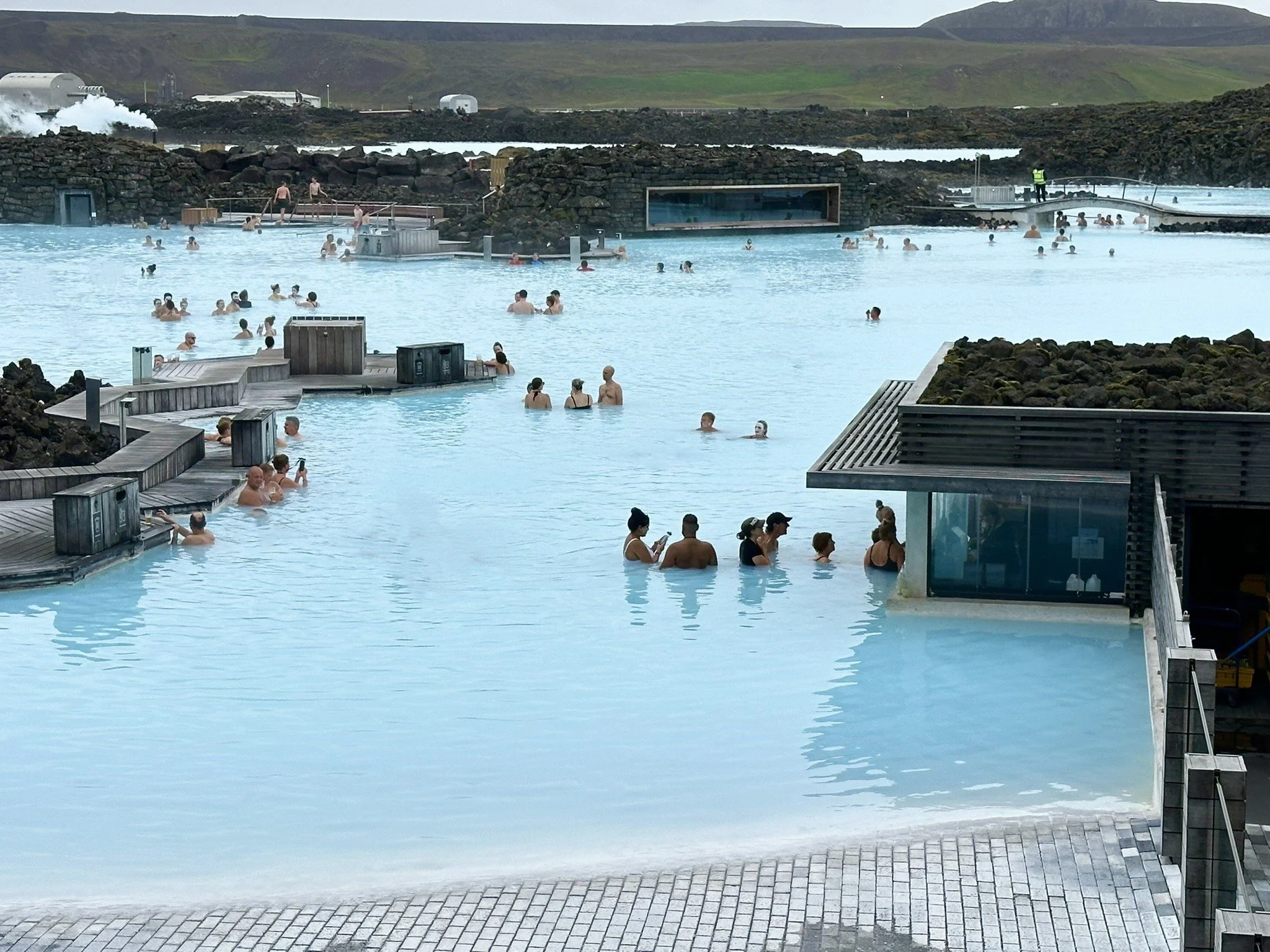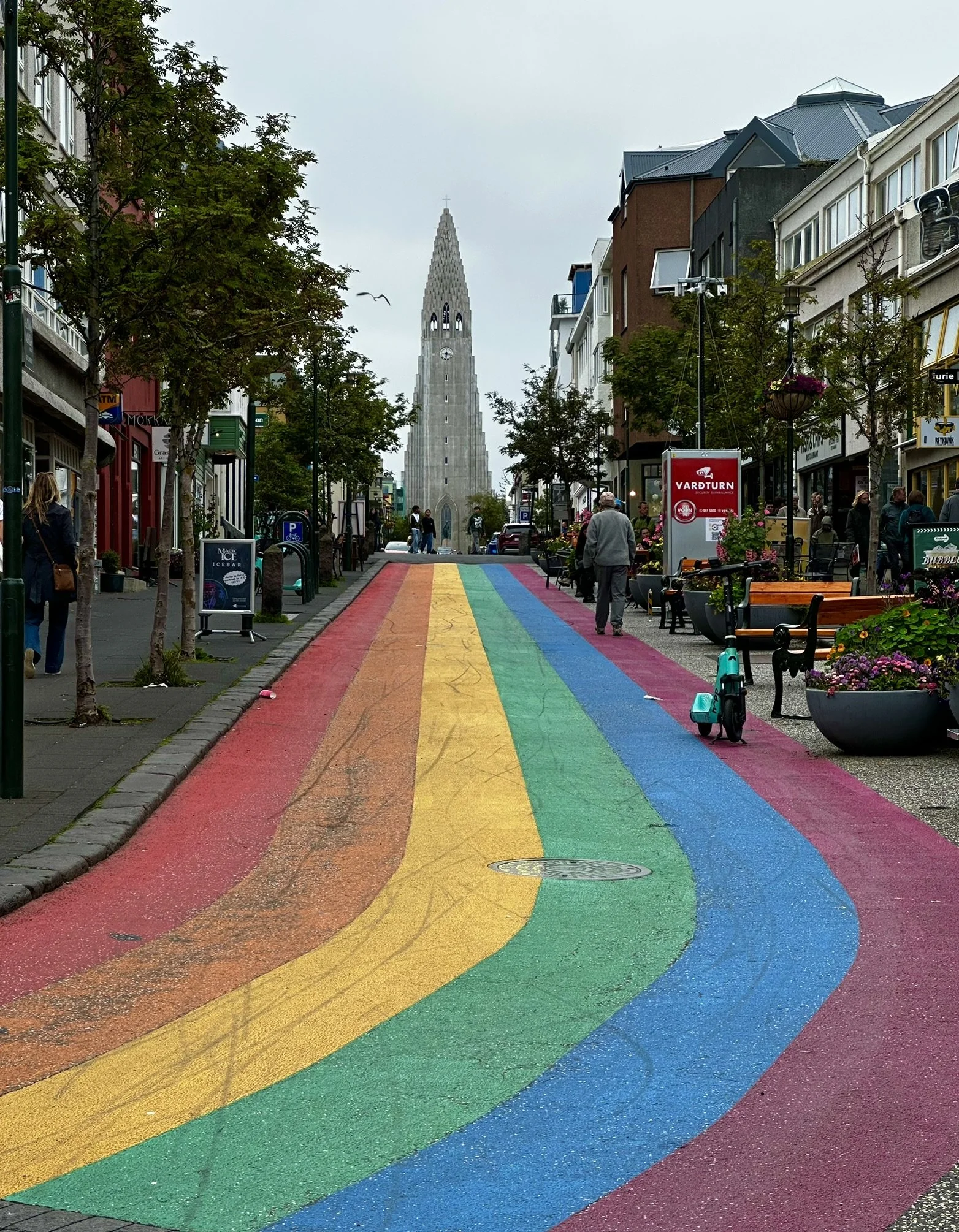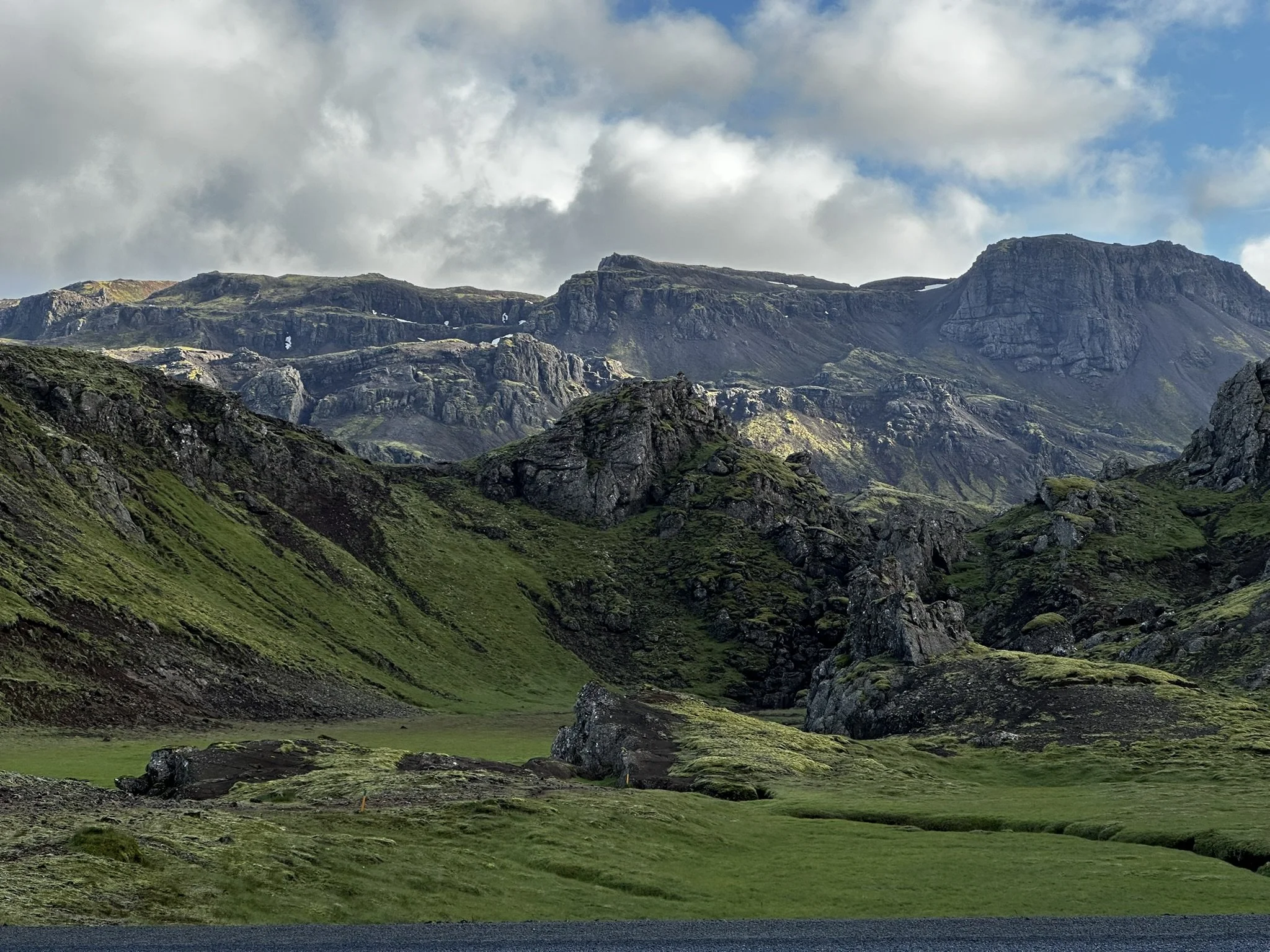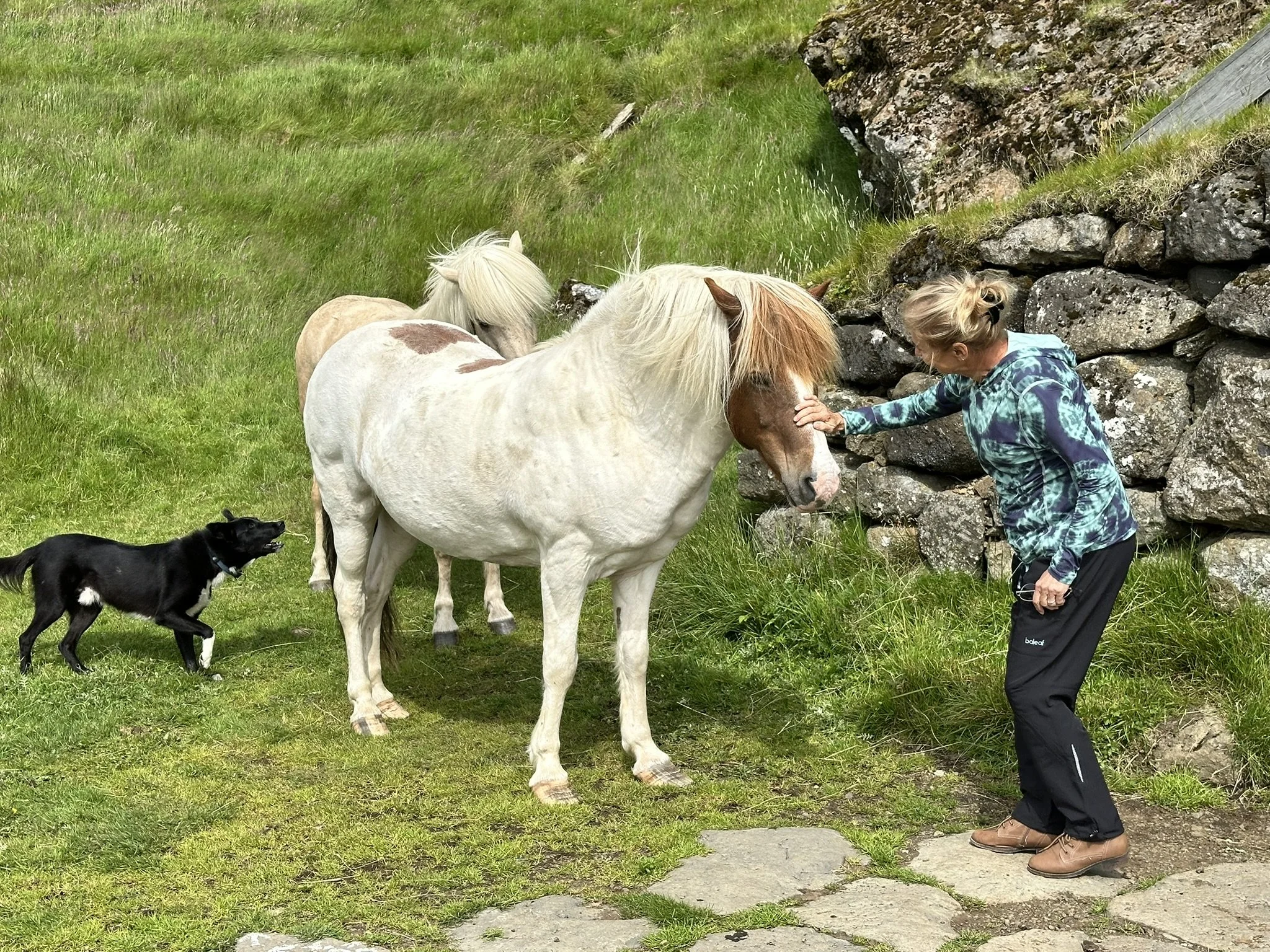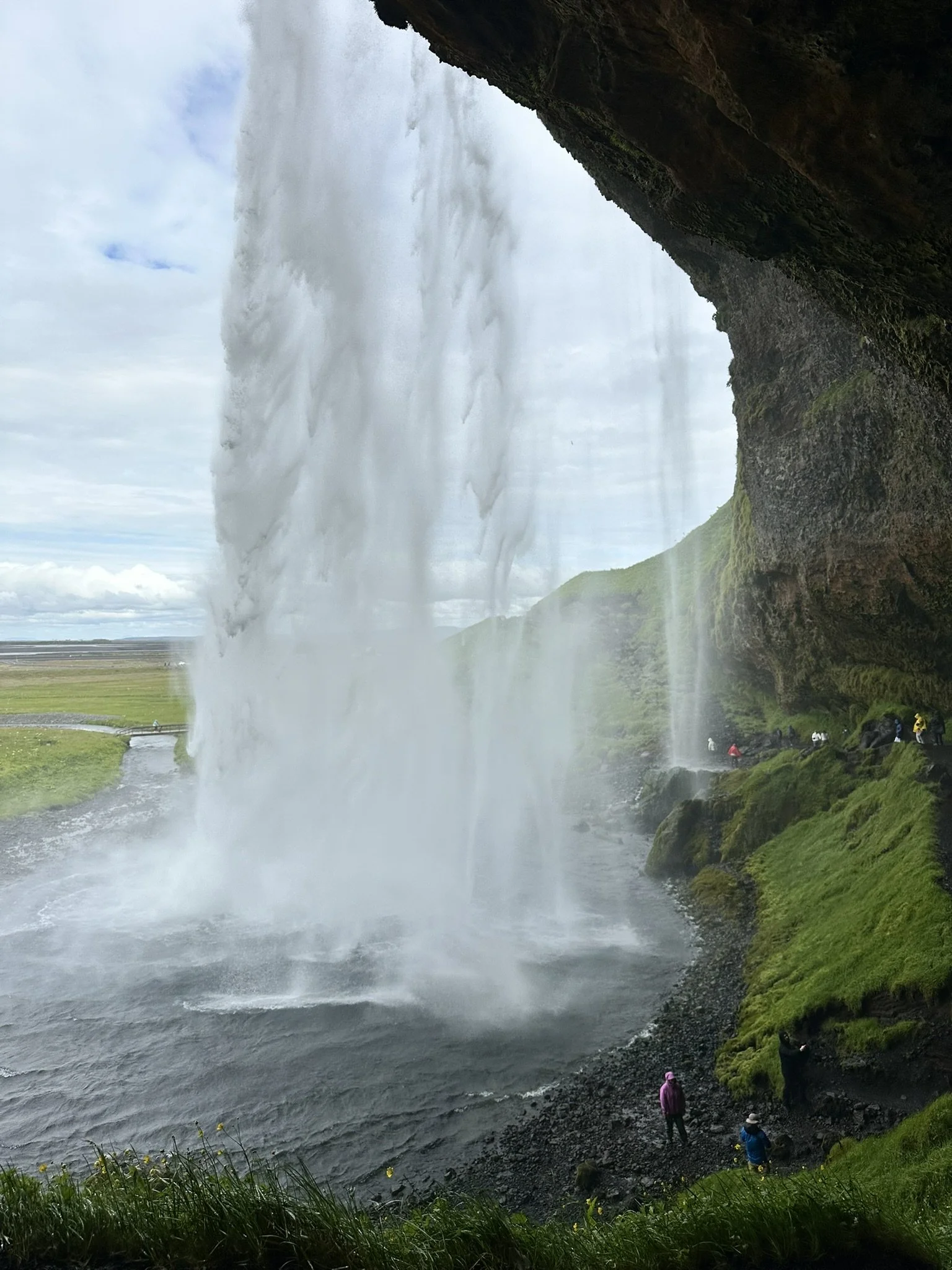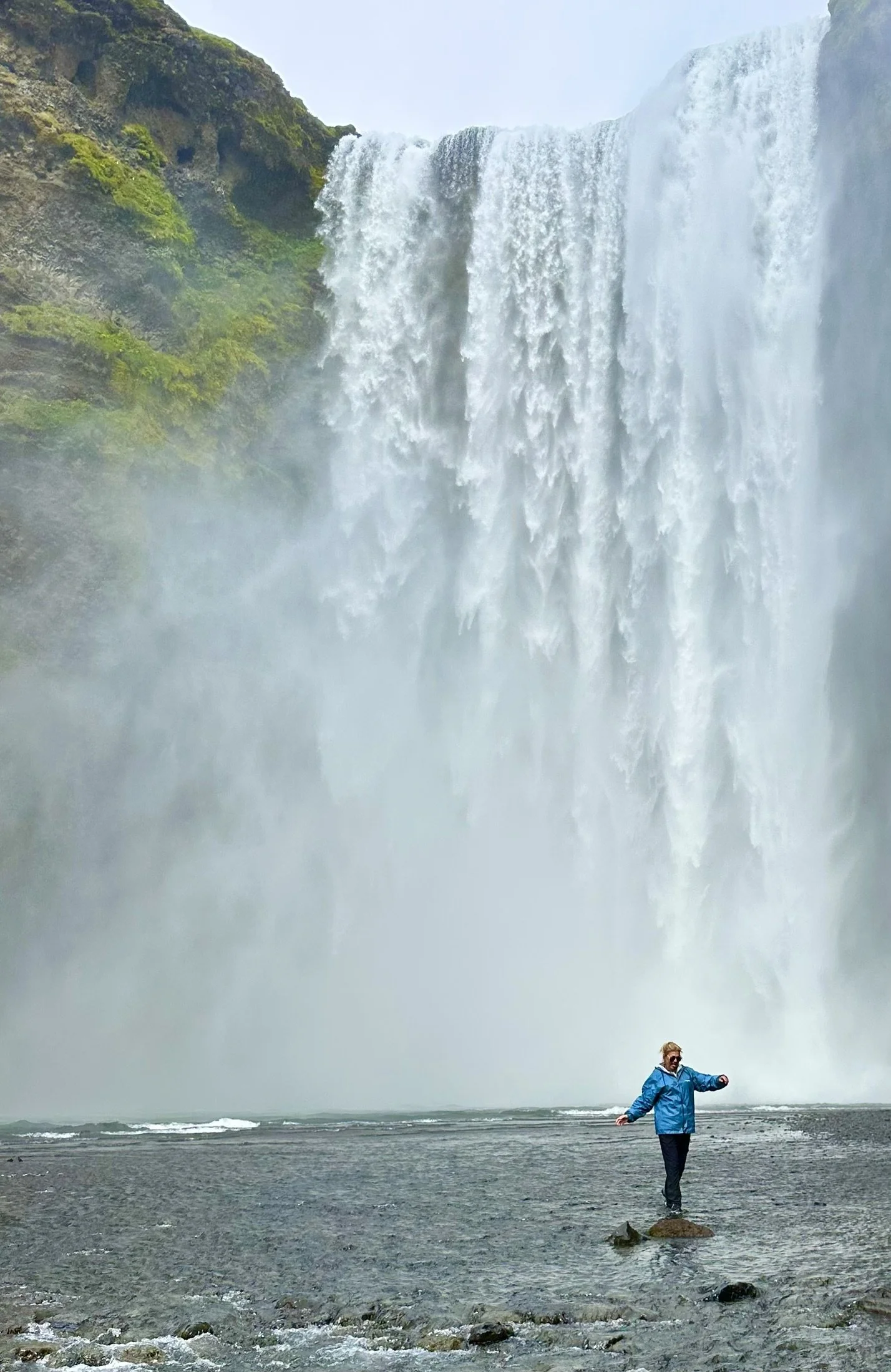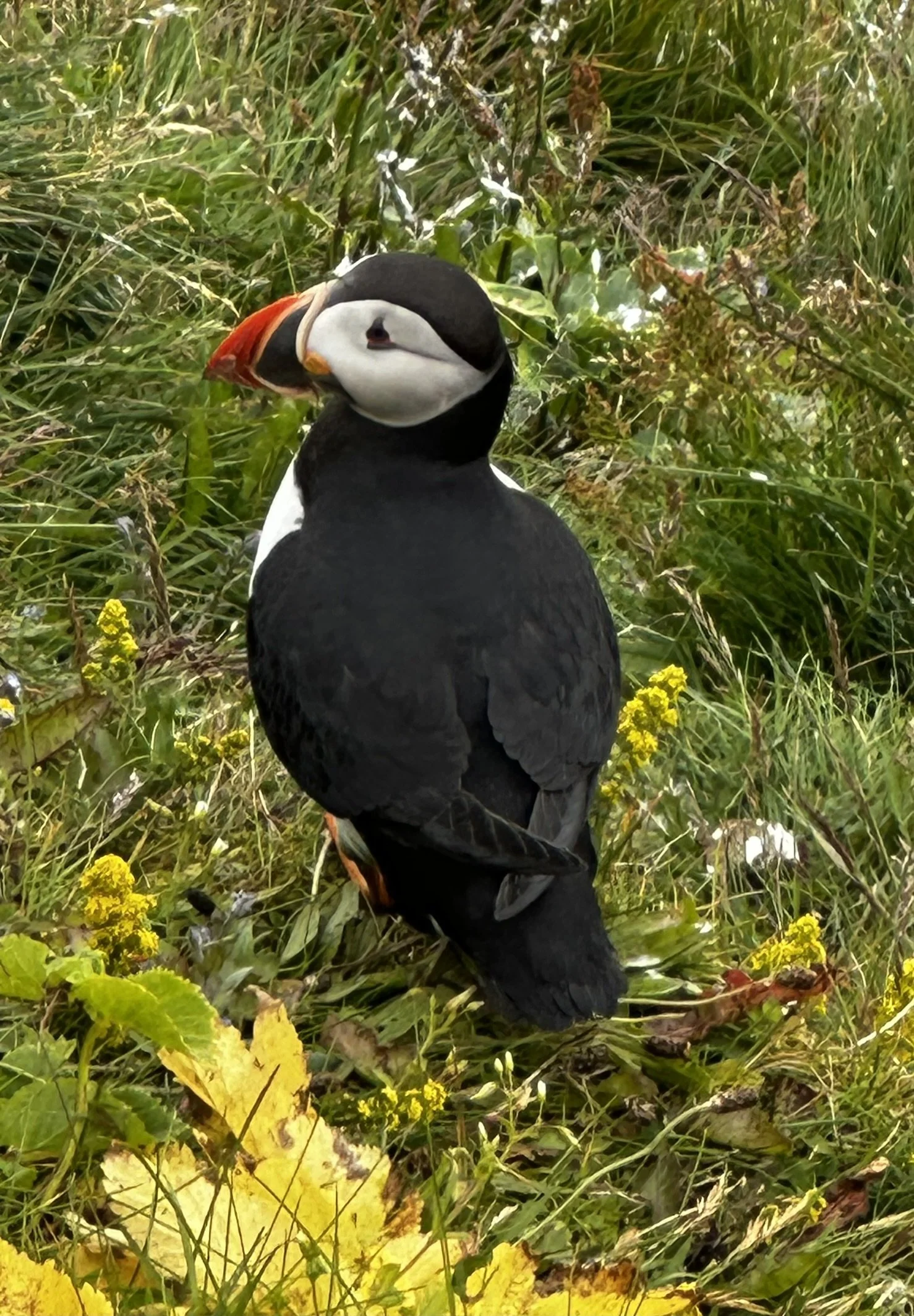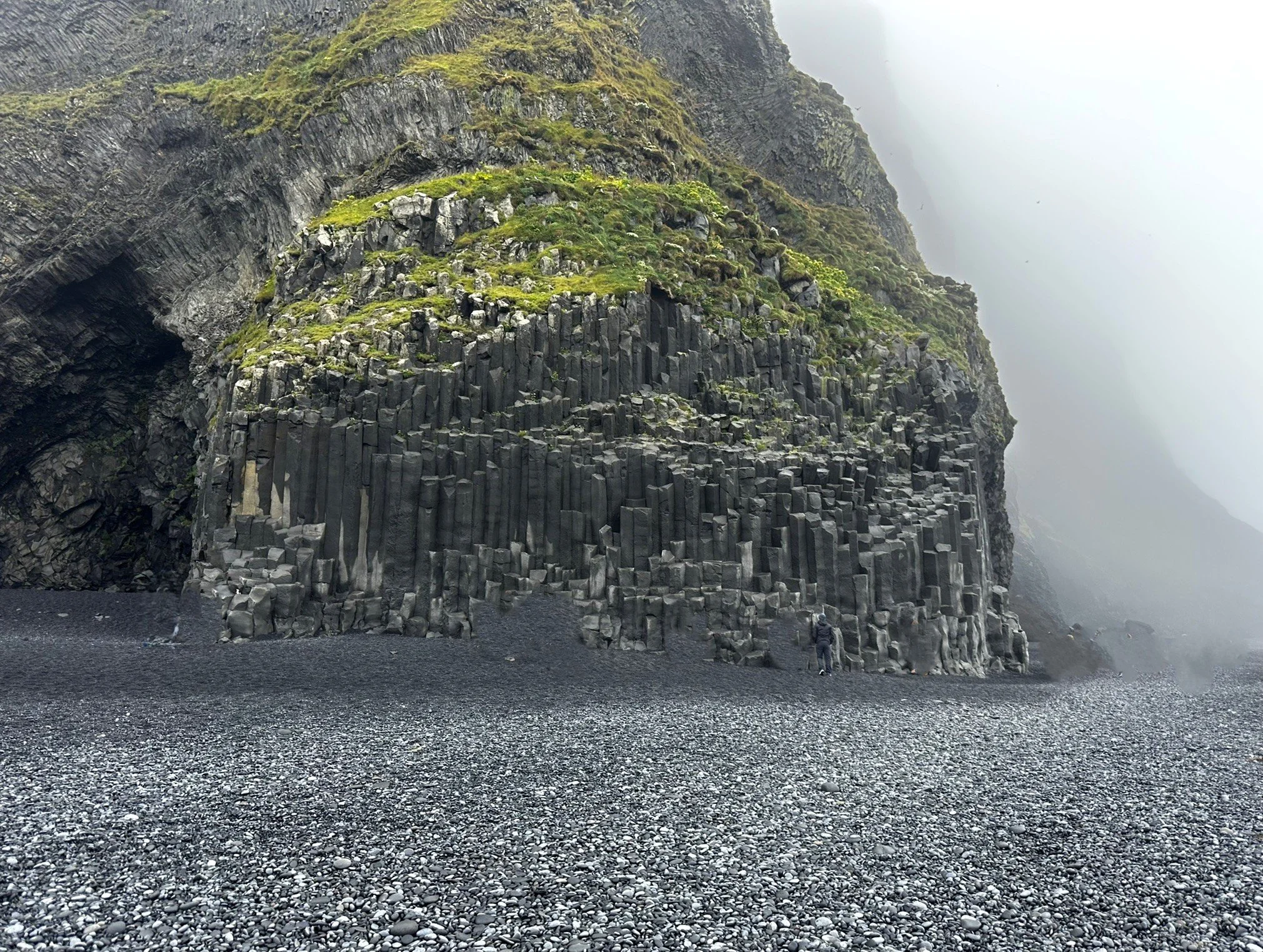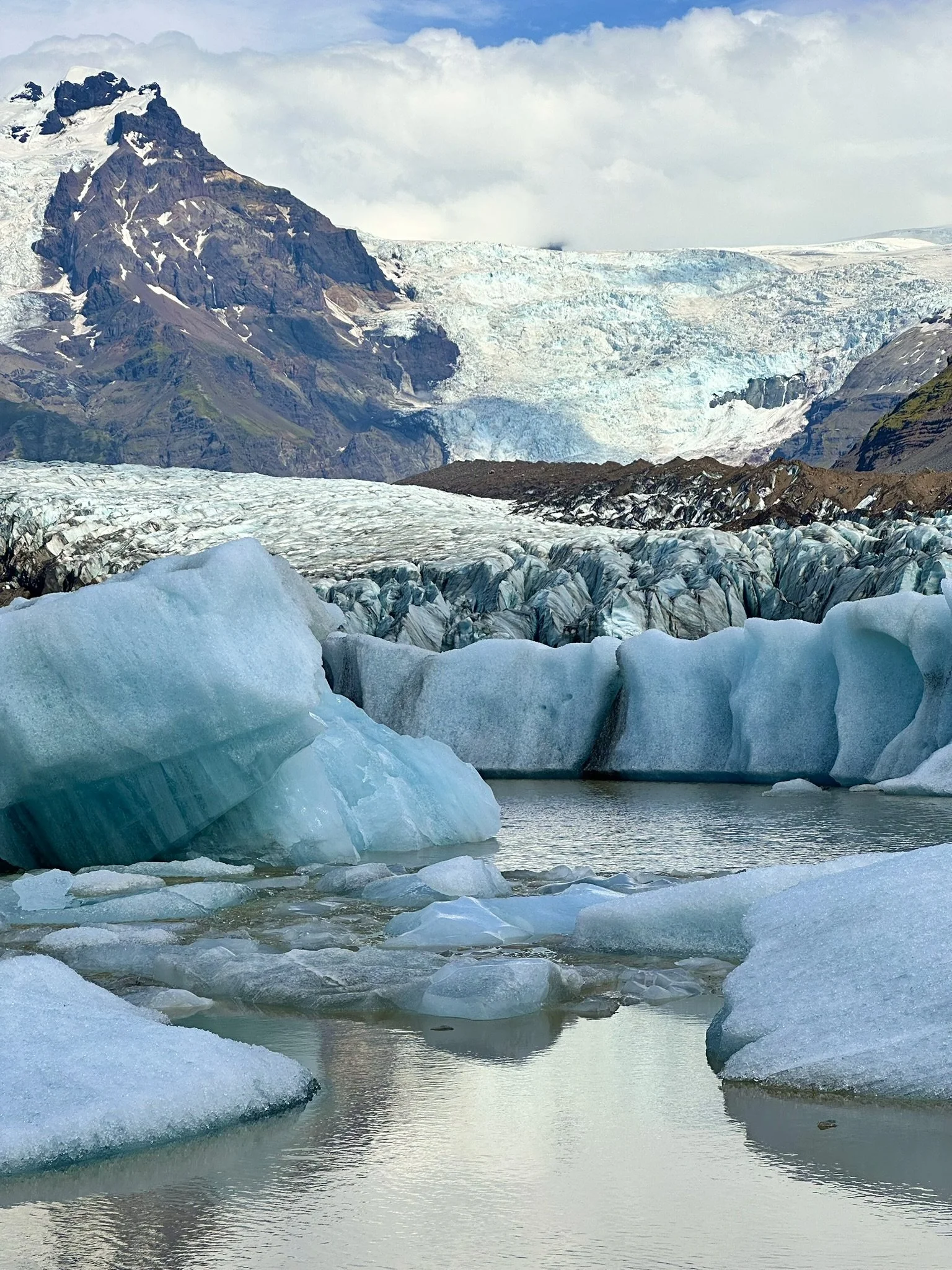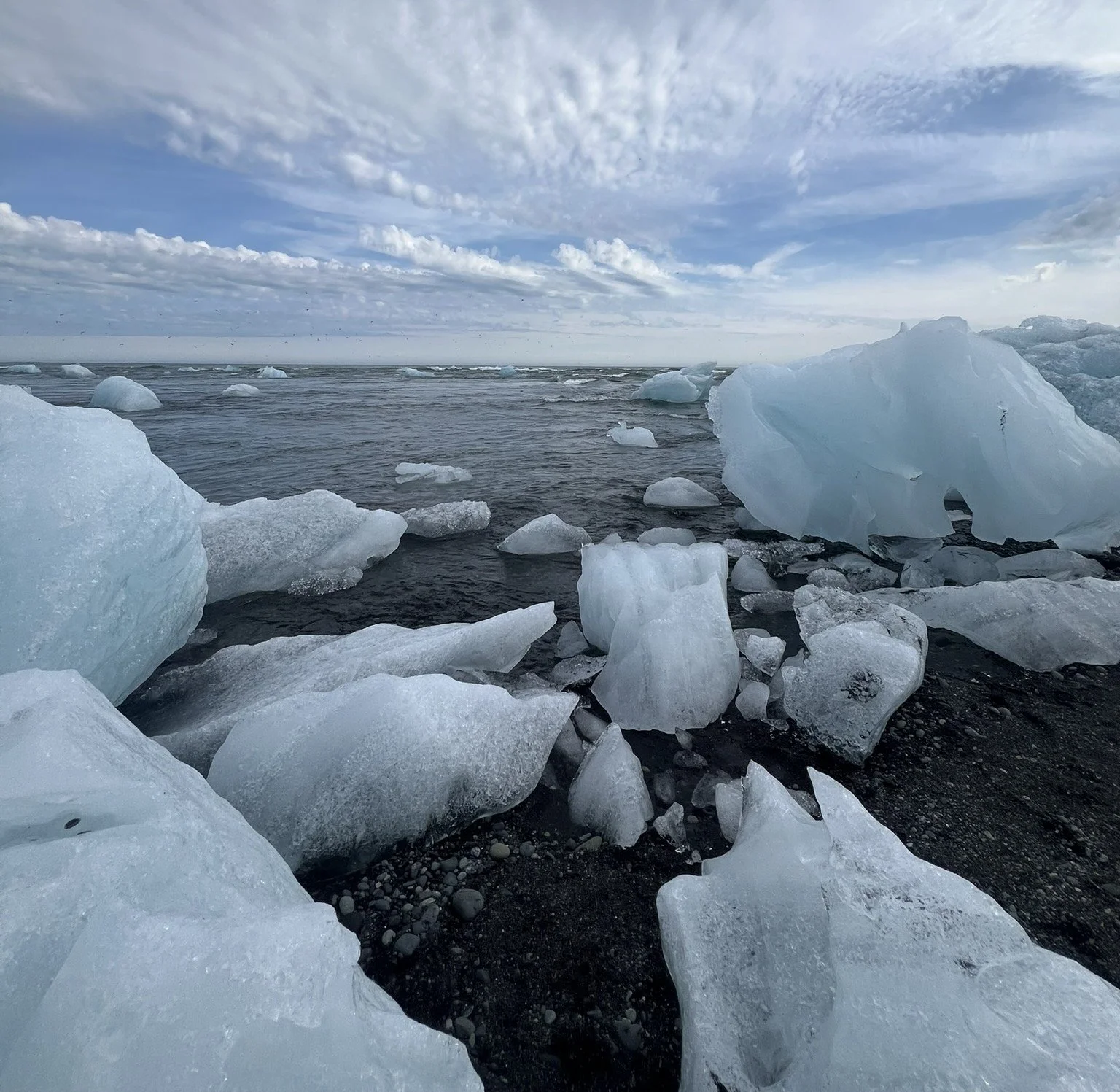Exploring Iceland’s Southern Coast
Iceland is known as the "Land of Fire and Ice" due to its dramatic landscapes, which include black sand beaches, active volcanoes, and massive glaciers. It's the land of expansive glaciers, hiking, and whale watching. During the summer, the mountains are green with alpine flowers, grazing sheep, Puffin roosting on cliffs, and the experience of the midnight sun. Winter offers a magical white wonderland, allowing you to witness the shimmering Northern Lights, go on glacier hikes, explore ice caves, soak in geothermal pools, and enjoy snowmobiling on glaciers.
The Blue Lagoon
The Blue Lagoon is situated in a lava field on the Reykjanes Peninsula. It is a renowned destination where visitors can bathe in the warm, milky blue, geothermal, mineral-rich waters while experiencing the benefits of silica mud masks. This seawater is rich in minerals, such as silica and algae, which are known to heal and rejuvenate the skin.
Reykjavík
Most of the 390,000 population resides in the capital, Reykjavik, which is powered by geothermal energy. Laugavegur is a mile-long shopping street in central Reykjavík. This vibrant row is lined with clothes boutiques, shops, bakeries, restaurants, art galleries, bars, and bookstores, with side streets featuring colorful murals and street art, creating an open-air gallery atmosphere. Great lodging on Laugavegur are the boutique Alda Hotel Reykjavik, located on the east end, and the CenterHotel Plaza Adalstraeti, on the west end.
While in Reykjavík, tour the Hallgrímskirkja church and ROK for a local delicacy, such as cured reindeer. Visit the local bakery Brauð & Co. for a sourdough cinnamon roll, bread, or an apple strudel! The best bakeries always have a line out the door!
The Golden Circle
The Golden Circle is a 140-mile circle featuring jaw-dropping landscapes, charming white, red-roofed churches, massive waterfalls, swift streams, and a literal rift between tectonic plates. And lots of horses and sheep.
Thingvellir National Park: The world’s oldest existing parliament was established in 930 AD. The historic church, Þingvellir, was built in 1859 and has also been home to a church for over 1,000 years. Öxarárfoss Waterfall
Friðheimar Tomato Greenhouse: What a unique setting where the tables are set in the middle of a huge geothermal greenhouse surrounded by tomato and basil plants that are grown year-round! The best Tomato soup and delicious, freshly baked bread. Each table had a basil plant, allowing us to add fresh basil to our food easily. Also fresh mussels and ravioli!
Explore Þingvallavatn Lake. Drive the scenic Highway 435 winding through the countryside east of Þingvallavatn Lake. Stop and hike the Nesjavellir Trail (lookup on AllTrails).
A stunning and powerful two-tiered waterfall cascading into a rugged canyon. On a sunny day, which apparently is rare in Iceland, Gullfoss has a golden hue, hence the name "Golden Falls".
Views along Highway 435 east of Þingvallavatn Lake. Stop and hike the Nesjavellir Trail.
Icelandic Horses
The Icelandic horses have been isolated for over 1,000 years. They are unique, characterized by their distinct smooth, four-beat gaits, genetic purity, and resilience in harsh climates. Approximately 80,000 Icelandic horses live in Iceland, and an estimated 100,000 Icelandic horses live outside of Iceland. Once an Icelandic horse leaves Iceland, it cannot return, as this would compromise the genetic purity of the breed. They are considered one of the purest horse breeds in the world.
Ingolfsskali Viking Restaurant
An authentic Viking turf longhouse, serving farm-to-table from nearby farmers. Starters included Poet’s bread and baked cheese, accompanied by truffle honey and apple chutney. You can find the longhouse off Highway 1, about 33 miles from Reykjavik.
Seljalandsfoss Waterfall
Seljalandsfoss Waterfall is an iconic attraction featuring a unique pathway that allows you to walk behind the cascading water. Bring your raincoat and prepare to get wet from the continuous water mist. The waterfall is located on the Seljalandsa River, which originates from the melting Eyjafjallajökull Glacier. You can find the falls off Highway 1, about 80 miles from Reykjavik.
Skógafoss Waterfall
Skógafoss is one of the tallest waterfalls in Iceland, with a drop of 200' and 80' wide. You can wade right up to it, but be prepared to get drenched. You can find the falls off Highway 1, about 97 miles from Reykjavik.
Hike above Skógafoss to Hestavaðsfoss Waterfall by climbing the 470 steep steps! The reward is well worth the effort due to the breathtaking views right from the edge of the cliff.
The population of Iceland is around 390,000, and there are roughly 400,000 sheep! The sheep population is a significant part of Iceland's identity, with the Icelandic sheep breed being one of the oldest and purest in the world. The sheep roam freely throughout the country during the summer months, grazing on the lush highland grasses and berries. In the fall, a communal roundup event called Réttir involves farmers, family, friends, and even tourists, riding on horseback or ATVs, and culminates in festive music, dancing, food, and drink.
Dyrhólaey Lighthouse and Arch
Dyrhólaey and the beautiful village of Vík are approximately 108 miles from Reykjavik. Dyrhólaey is a small peninsula that rises 400' from the coast with the "castle-shaped" lighthouse. The 360-degree views are breathtaking! The blue ocean with a massive rock arch is the result of erosion. To the west lies an endless black sand coast with a view of the Mýrdalsjökull glacier, and to the east, the Reynisfjara Black Sand Beaches. Puffins are often found on the walls preparing for nesting during the summer months. Dyrhólaey is off Highway 1, about 117 miles from Reykjavik. Stay in Vik at the Guesthouse Carina and get a black crust pizza at the Black Crust Pizzeria. For a morning coffee, try the Skool Beans Cafe, served from an American yellow School Bus.
The Atlantic puffin lives far from land in the North Atlantic Ocean, spending much of their time flying, swimming, and diving for fish. They return to coastal areas to nest in cliffs and raise their young. Puffins are monogamous and create ground burrows to lay a single egg. While they are vocal at their breeding colonies, puffins are silent when out on the open ocean.
Reynisfjara Black Sand Beach
Beach of black volcanic sands and smooth pebbles with unique hexagonal basalt pillar formations. Halsanefshellir Cave is a popular filming location, appearing in Game of Thrones, Star Trek Into Darkness, Star Wars: Rogue One, and Noah.
Svínafellsjökull Glacier
Svinafellsjökull's dramatic scenery and deep crevassed landscape is an outlet glacier of Vatnajökull, the largest glacier in Europe, which covers eight percent of Iceland's landmass. The black crevasses, highlighted with black volcanic ash, contrast with the glacier's bright blue ice structure. This beautiful, chiseled glacier first gained recognition for its role in Interstellar and Batman Begins. In the Game of Thrones movies, the "North of the Wall" refers to a frozen wilderness region beyond a massive ice structure, primarily filmed at Svinafellsjökull glacier.
Jökulsárlón Diamond Beach
Diamond Beach is littered with massive, melting icebergs on dark volcanic sand, creating a mesmerizing landscape. As the tide lowers, the lagoon created from the melting Jökulsárlón glacier flows out to sea, carrying glistening chunks of icebergs ranging in size from small shards to massive formations. Diamond Beach is off Highway 1, about 235 miles from Reykjavik. Stay at the Seljavellir Guesthouse in Höfn and visit Pakkhús Restaurant for their Langoustine Pizza.
Iceland is an island located in the North Atlantic Ocean, near southern Greenland, between Europe and North America, and is comparable in size to the state of Ohio. The first to arrive were Greek explorers around 325 BC, who described a land called "Thule," which means a mythical place believed to be at the northernmost edge of the world. Later, Irish monks and Norse Vikings explored and settled the island around 874 AD.
Iceland is known for its Black salt, chocolates, and wool sweaters and products. The currency is the Icelandic Krona (ISK), but credit cards are widely accepted throughout the country. To convert krona to dollars, use this easy convertion estimate: 1,000ISK=$8.12 12,077ISK=$100 13.5 liters of gas is equivalent to 8.3 gallons, which costs 10,058 ISK, $83. Goods are expensive! This is due to factors such as the high cost of living, reliance on imported goods, and the island's isolated location.
